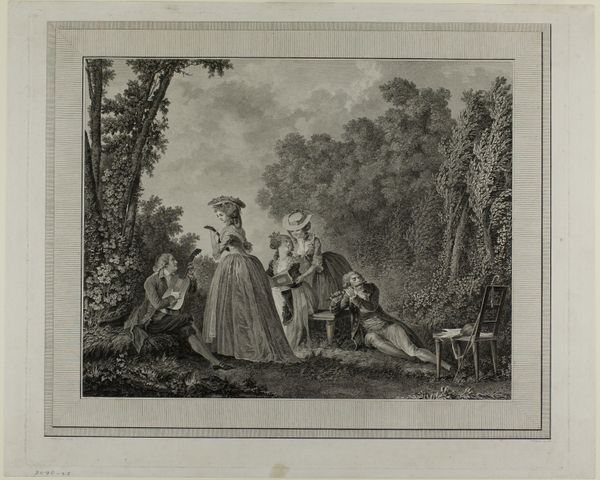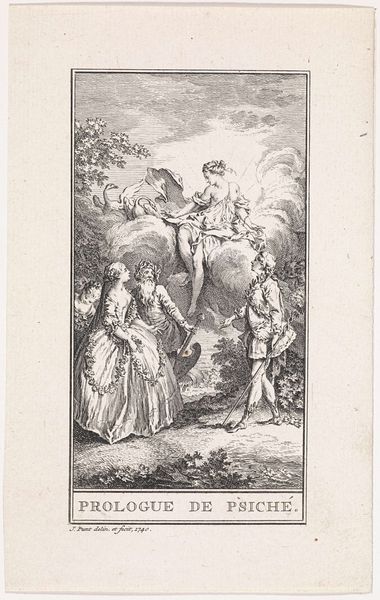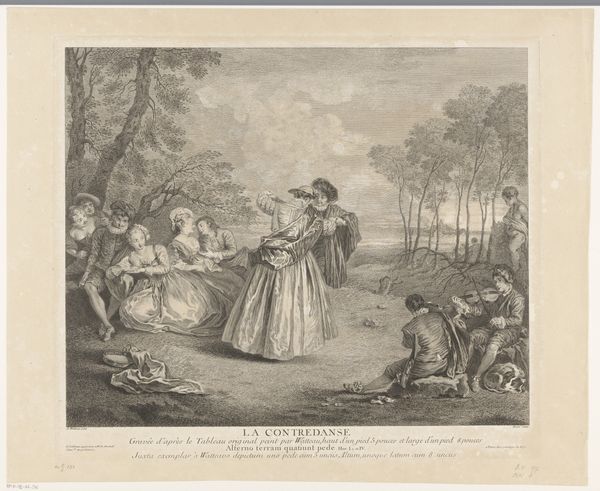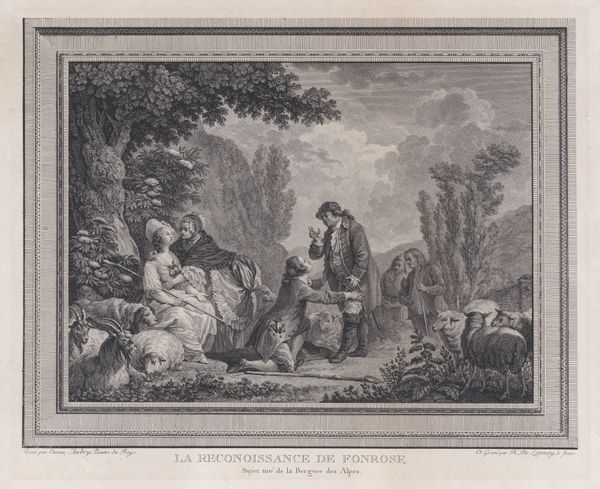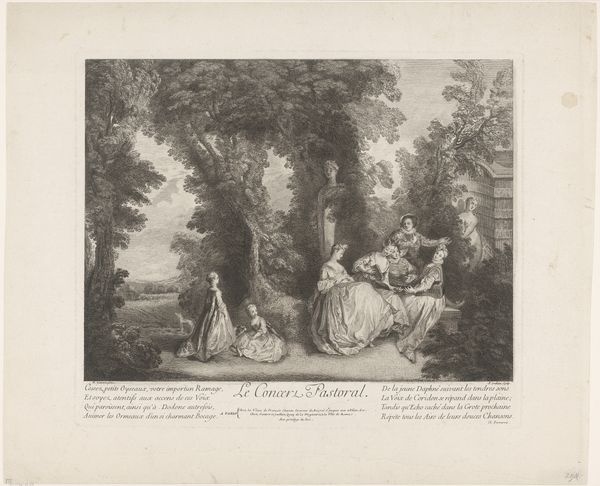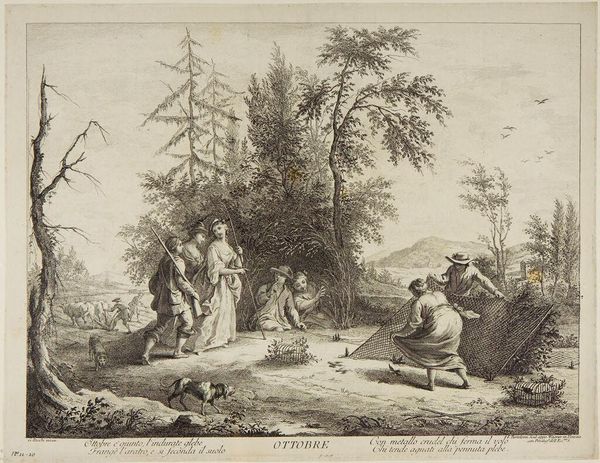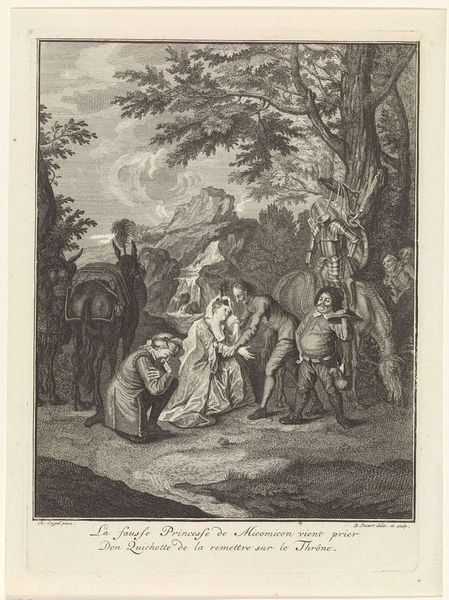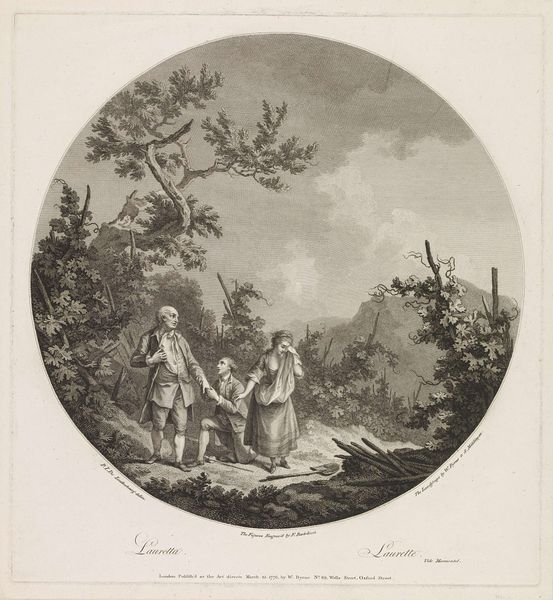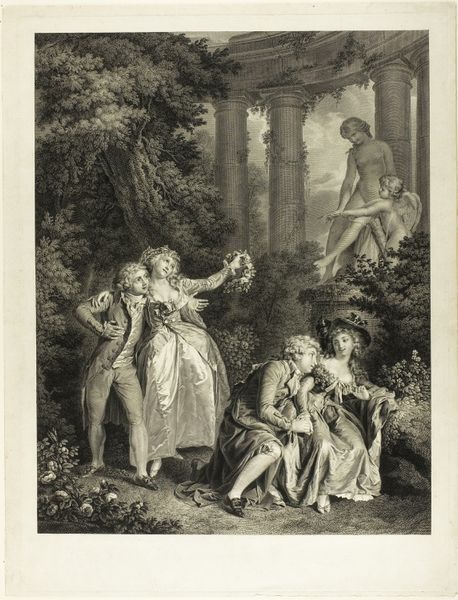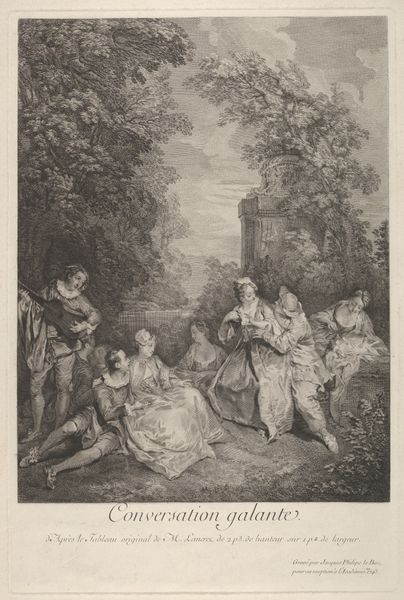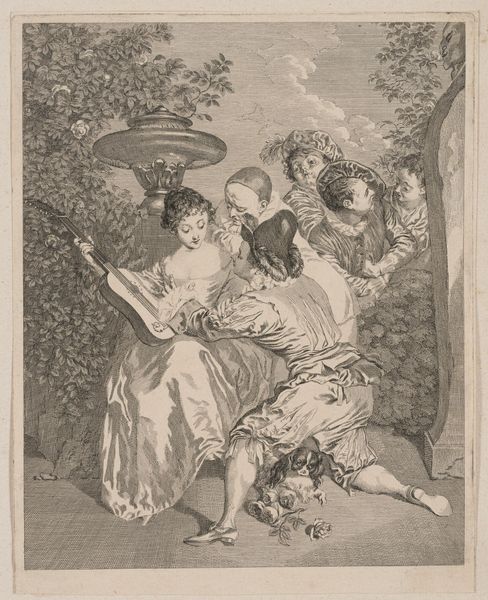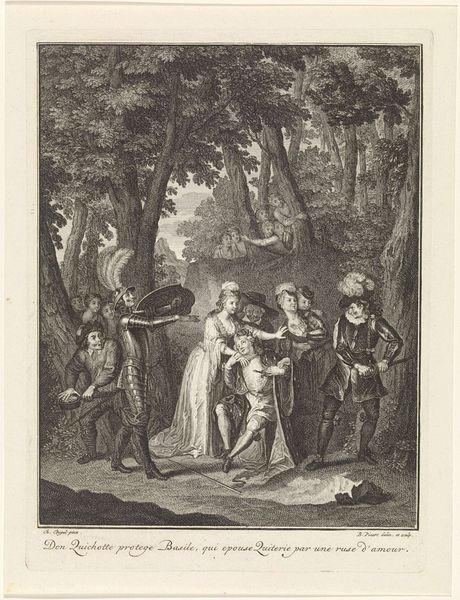
Copyright: Public Domain
Editor: Here we have "Le mercure de France", an engraving on paper from around 1780 by Heinrich Guttenberg, currently held at The Art Institute of Chicago. The scene feels very posed, almost staged. I'm curious about what it all means. What are your thoughts on this print? Curator: As a materialist, my interest lies in the processes involved. This isn't just a representation of a scene; it's an object crafted through very specific means. Consider the labor required for such detailed engraving in Guttenberg's era. The production, the tools needed... and what that meant in the economic landscape of the time. Editor: That's interesting; I hadn't thought about it in terms of labor. Curator: And what about the paper itself? Where did it come from? Was it handmade, impacting the texture and thus the ink absorption, affecting the final image? The distribution networks for these prints is part of the story. Did those in the provinces have the opportunity to engage with pieces like this? Were they destined just for wealthy salons of Paris? Editor: So you're saying the physical creation and circulation of this print reflect the societal structures of the late 18th century? Curator: Precisely. Also note how prints challenged hierarchies. This engraving reproduces, makes widely available and arguably degrades an original artwork in painting or sculpture. But in that democratization new interpretations are always possible, creating something novel in the process. This is a printed landscape, the product of multiple stages of artistic labor which made the images both exclusive and inclusive. Editor: Wow, looking at it that way, it's less about the people depicted and more about how the print was made and circulated. It offers a unique insight into the artistic production of the time. Thanks. Curator: Precisely. Understanding the social life of the artifact lets it speak with many voices across time.
Comments
No comments
Be the first to comment and join the conversation on the ultimate creative platform.
